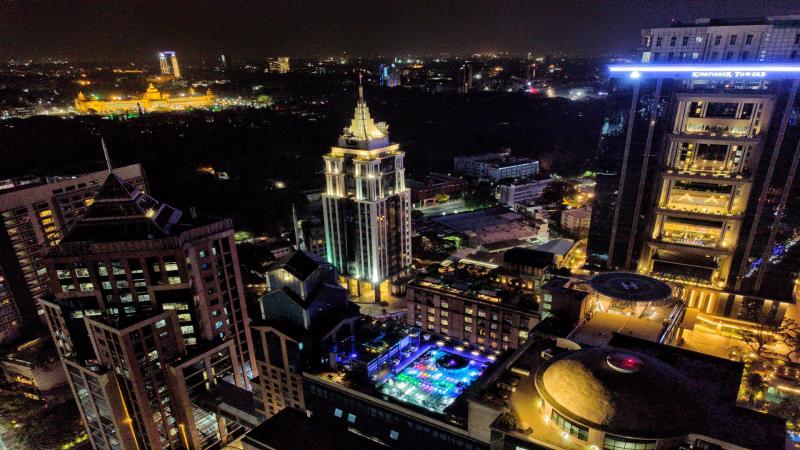
Projected to be the third fastest-growing city in the world, Bengaluru's transformation from being the 'Garden City' to the 'Silicon Valley of India' has made it the modern face of the Indian economy. But all this development has come at a cost with the city losing 89% of its green cover in just forty years. Once known for its cool climate, it is now infamous for its horrible traffic and concrete buildings. Middle-class ghettos and affluent gated communities have replaced the famed lakes, and the gardens have been cleared for IT parks. Thanks to the exponential growth, poor urban planning and corruption, experts believe that the city is going to be unlivable in a few years.
There is more downside to urbanisation. As cities urbanise, they tend to be hotter compared to the surrounding non-urban areas because of increased concrete buildings and asphalted sidewalks, which retain heat better than vegetated surfaces. Trees and vegetation decrease the surface temperature by providing shade and also through evapotranspiration. With the green cover vanishing in the cities, the surface temperature also increases. All these factors contribute to a city turning into an Urban Heat Island (UHI).
In a recent study, researchers at the Department of Atmospheric and Environmental Sciences, University of Albany, State University of New York, have explored the impact of increased urbanisation on Bengaluru. They have also measured how the UHI intensity of the metro city has changed over the years. The study, published in the journal Remote Sensing Application: Society and Environment, calculates the extent of the urbanised area over Bengaluru and the intensity of UHI during two seasons—the monsoon season (Aug-Sep-Oct) and the dry season (Dec-Jan-Feb) from 2003 to 2018.
"Bengaluru's urbanisation is unique because vegetation and aerosols both influence the magnitude of the UHI effect," says Ms. Heather Sussman, the lead author of the study.
The researchers studied the effect in two seasons as it provides a comprehensive understanding of the UHI for the city, which varies seasonally.
The study reveals that urbanised land in Bengaluru has increased by 15% from 2003 to 2018, as a result of which, the natural vegetation greenness in the city has decreased by 6% in the dry season and 14% during the monsoon season. "The UHI intensity has increased for Bengaluru, except in the dry season during the daytime," says Ms. Sussman. The highest UHI intensity of about 1.43K over the city was observed during the nights of the dry season. During the day, however, many pollutants remain in the atmosphere, absorbing solar radiation and limiting surface warming. The fact that pollutants reverse the UHI intensity during the dry season also points to the crisis of air pollution in the city.

Image: Bangalore city as viewed from a vantage near the Corporation Circle. Credits: Muhammad Mahdi Karim, Wikimedia Commons, under license GFDL 1.2
Though the trends are worrying, the researchers say that the UHI intensity of Bengaluru, compared to the other major cities of the world, is not alarming.
"However, if Bengaluru does not take proper precautions to curb urban heating, the UHI intensity the city may experience will likely become alarming, especially if other cities do begin to take preventive measures," she warns.
Ms. Sussman lists down a few strategies for Bengaluru's lawmakers to mitigate the effects of UHI, which includes maintaining or increasing green spaces/vegetation abundance. This could be achieved by 'green roofing’, where plants are maintained on the roofs of buildings.
"Another option includes installing cool or reflective roofs that reflect sunlight. With this, less solar radiation will reach the surface, and thus surface warming will become more limited," she says.
Ms. Sussman also warns of the grave health-related issues that inhabitants may face if the city chose to continue the way it is.
"One issue will likely be the increased risk of heat exhaustion, especially for those who work outdoors. Additionally, respiratory illnesses and difficulty in breathing may become more prevalent, which increase with pollution and heat exhaustion," she explains.
Recent reports about the increasing cases of asthma among children in India only reaffirms this argument.
Unless drastic policies are implemented urgently, what was once the air-conditioned city, will quickly become an unlivable concrete island. Decongestion and re-greening the city is crucial, and policymakers need to get their act together to make Bengaluru a sustainable city.
This article has been run past the researchers, whose work is covered, to ensure accuracy.






